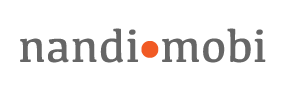Analogous Space
David Vanderburgh
Alok Nandi
Urban exhibitionism, or representing the recalcitrant city
Abstract
This paper considers an exhibition organized in 2007 about the design of Louvain-la-Neuve, a Belgian New Town and campus, as a case study in the possibilities and limits of representation. The paper will contend that certain characteristics of the object (not only Louvain-la-Neuve itself, but its design – in other words, both acts and products of those acts) constrain its representation in critical ways. The town, its design, the exhibition, and its design may all be understood respectively as “spaces of action and decision” which co-exist in a field of mimetic tensions. In this context, possibilities of navigation and interaction available to exhibition visitors are of particular importance and will vary according to different sites, users and design decisions.
The paper will evoke four modes of representation used in the exhibition: Reënactment, Reproduction, Analysis, and Critical Judgment. We will explain in what way the first two, which we consider “analogical” modes, are of interest because of a certain rhetorical “nearness” to the object. For the latter two, on the contrary, it is the “distant” or discretizing character of these “logical” modes of representation that will concern us. We consider that this means of understanding representation helps to show the interdependence between objects in general and their representation. By the same token, we hope to contribute to a kind of “poetics” of exhibition-making in architecture and urbanism.
Alok b. Nandi is active in cross-media projects, with a focus on interactive mise-en-scène and narrative architecture. Background combines engineering, management and cinema studies. He has conceived “Satyajit Ray at 70” and directed “Les voies de Tagore” with vocalist Sharmila Roy. Japan Foundation fellow in 1996. Awarded for urbicande.be in 1997, selected for Imagina 2000 and 2002. Interventions in Porto 2001, in lille3000. Exhibitions in Cannes Film Festival, London , Paris, “utHOPEia” in Salzburg and Vienna, Panopticon in Ecole du Louvre, MAAD in Lille. Writings in Beaux-Arts Magazine, Cahiers du Cinéma, Inside Internet, Publish, … Invited professor and regular speaker (Interactive Frictions, LA; DAC Georgia Tech and Bergen; CODE 2001 Cambridge; ArtSci 2002 New York; ARCO03 Madrid; transmediale06; MIT; Doors of Perception; ISEA 2008). More info via www .aloknandi.net
David Vanderburgh is Professor of Architecture at the Université catholique de Louvain, where he has taught since 1995. He publishes and speaks regularly on such subjects as architectural competitions, theories of representation and drawing, and the discipline of architecture. In 2007, he was co-curator of a major exhibition on the design of Louvain-la-Neuve, the first Belgian new town to be realized since the 17th century. He co-edited and wrote the introduction to the collective volume, Tourism Revisited, published in 2007. In 2006, he held a research fellowship from the Canadian Embassy for the comparative study of Canadian and Belgian architectural competitions. He is currently President of the Architecture, Urbanism and Civil Engineering Department at UCLouvain.
http://www.boekentoren.be/default_analog.aspx?PageId=253
14-17 May 2008
Ghent University, International Conference ANALOGOUS SPACES
The International Conference on Analogous Spaces interrogates the analogy between spaces in which knowledge is preserved, organized, transferred or activated. Although these spaces may differ in material, virtual, or operational ways, there are resemblances if one examines their ‘structure,’ ‘form’ and ‘architecture’. How do these spaces co-exist and interrelate?
The conference will be organized around three main themes:
- The first theme (15 May) explores spatial analogies in terms of social and intellectual networks. What are the geographic relationships and/or technological affordances that support or inhibit the development of such networks? What constrains their development and effectiveness and how do different kinds of network models help in understanding their formation, evolution and dissolution.
- The second theme (16 May) deals with the space of knowledge and memory. How can we compare the encyclopedia and the museum, the book and the library, the diagram and the database? How do they use architecture to structure knowledge and how is architecture used as a metaphor of memory?
- The third theme (17 May) explores the space required for speed, action and decision making. In modernity, fast and effective action generates its own space of organization, intelligence and feedback. What does this space look like, and what are the different ways in which it can be represented?
